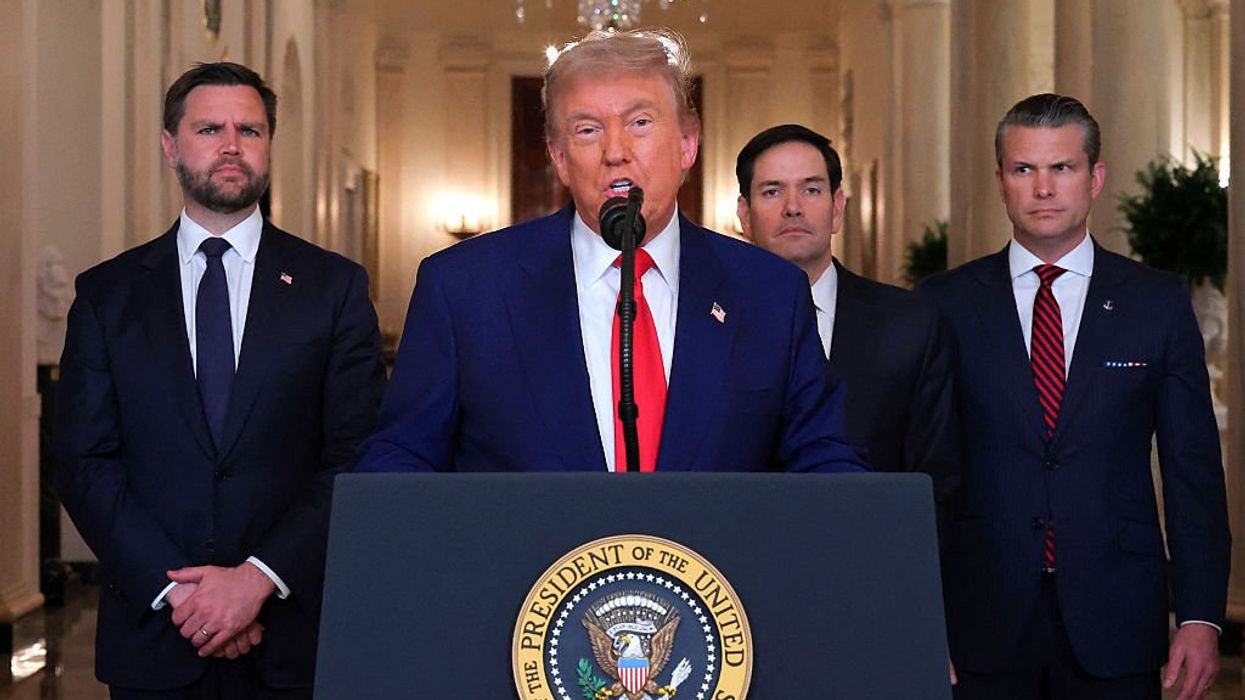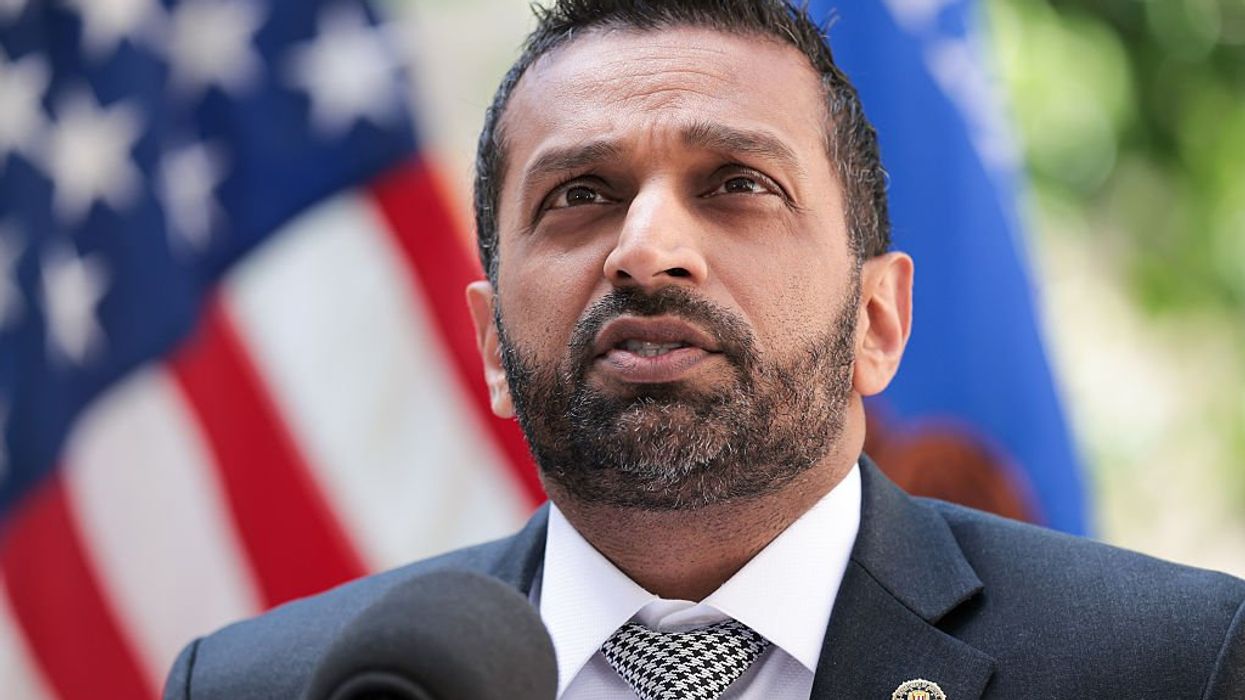The New York Times' editorial on the debt limit debate was indignant: “Each year Congress goes down to the deadline, then lifts the ceiling. But the game is trickier this year, and could have more serious consequences. Congress threatens yet another crisis to rattle already-worried financial markets.”
 President Barack Obama walks with his wife Michelle Obama and former Presidents Jimmy Carter and Bill Clinton during the ceremony to commemorate the 50th anniversary of the March on Washington for Jobs and Freedom, Aug. 28, 2013 in Washington, D.C. (Getty Images)
President Barack Obama walks with his wife Michelle Obama and former Presidents Jimmy Carter and Bill Clinton during the ceremony to commemorate the 50th anniversary of the March on Washington for Jobs and Freedom, Aug. 28, 2013 in Washington, D.C. (Getty Images)
That was in 1987.
“In a world already jittery over the dollar, interest rates and inflation, any new stalemate in Washington invites market turmoil," the Times wrote.
The gripes echo some of the same worries expressed over the current debt stalemate, something that has happened at least 27 times since 1978, according to the Congressional Research Service, despite President Barack Obama's repeated assertions that it is new.
Past disputes included unrelated policy matters such as tying a repeal of an oil import fee in 1980, employer-paid health insurance in 1989 and advancing the “Contract with America” in 1996 to debt ceiling hikes.
The president and Congress have until Oct. 17 to increase the $16.7 trillion debt ceiling.
During a press conference Tuesday, Obama spoke as if it was unheard of to use the debt limit in a debate over Obamacare funding.
“What you haven't seen before, I think, from the vantage point of a lot of world leaders is the notion that one party in Congress might blow the whole thing up if they don’t get their way,” he said.
On Wednesday, White House press secretary Jay Carney also implied the current confrontation was without precedent before the debt ceiling debate of 2011 that resulted in the Budget Control Act.
“Congress should do its job and fulfill its responsibility in the manner that, prior to 2011, it had always been fulfilled, which is raising the debt ceiling without the real threat of default and without threatening default if you don’t get the partisan demand that you ask for,” Carney said.
But a study published in Public Administration Review in 1993 noted this became routine decades ago.
“Additionally during this period, the genesis of a pattern developed that would eventually become full blown in the mid-1970s and 1980s: the use of the debt ceiling vote as a vehicle for other legislative matters,” the study stated.
Even The Washington Post gave Obama “four Pinocchios,” for saying on Sept. 18, “You have never seen in the history of the United States the debt ceiling or the threat of not raising the debt being used to extort a president or a governing party and trying to force issues that have nothing to do with the budget and nothing to do with the debt.”
Here is a list of some of the occasions Congress attached strings to raising the nation's borrowing limit:
• 1971: For the first time, changes to Social Security were part of the debt limit increase, according to a summary by the Senate Republican Policy Committee.
• 1973: Democratic Sens. Ted Kennedy and Walter Mondale tried to attach a campaign finance reform amendment in the midst of the Watergate scandal to the debt limit bill, The Washington Post reported. The amendment was filibustered and eventually stopped, but caused delay in passing an increase in the debt limit.
• 1979: Congress passed a debt limit increase on the condition that in 1981 and 1982 the president and Congress submit balanced budget proposals, according to the Congressional Research Service.
• 1980: Congress repealed the oil import fee in a bill that raised the debt ceiling, which President Jimmy Carter vetoed. A Democrat-controlled Congress then voted to override the president's veto and enacted a debt ceiling increase with the oil import repeal intact, according to the CRS. The House voted 335-34 and the Senate voted 68-10. This is somewhat similar to the debate going on today, as the oil import fee was a major part of Carter's energy policy, just as Obamacare is the current president's signature legislative achievement.
• 1981: Sen. William Proxmire, D-Wisc., delivered a filibuster of 16 hours and 12 minutes on Sept. 28 to block a vote on the debt ceiling.
• 1982: Senate Majority Leader Howard Baker, R-Tenn., allowed senators to propose any amendment they wished to the debt limit bill, resulting in more than 1,400 total amendments filed.
• 1983: A bipartisan group of senators, led by Sens. Russell Long, D-La., and William Armstrong, R-Colo., argued that raising the debt limit leads to more borrowing. They succeeded in stopping President Reagan's original request, as Long said, “Whenever you vote for this motion you are voting to continue the biggest deficits in the history of the country as far as the eyed can see.”
• 1985: This was among the more controversial proposals tied to increasing the debt ceiling that dragged on for three months. The Balanced Budget and Deficit Reduction Act of 1985, also known as Gramm-Rudman-Hollings, that required triggered budge cuts, was tied to the increased borrowing limit. In this case, Senate leaders refused to consider a temporary extension of the debt limit for a month after it expired. This prompted borrowing from other areas of the government, including Social Security, according to the study published in Public Administration Review. It was only when Social Security checks were in jeopardy that a temporary increase was allowed.
• 1987: The Supreme Court found the automatically triggered spending in the 1985 bill unconstitutional. But two years later, another showdown ensued over a constitutional fix to an updated Balanced Budget and Deficit Reduction Act.
• 1989: Political infighting ensued within the Democratic House and Senate over Medicare's catastrophic health coverage provision. The bill dropped Medicare, but instead repealed tax rules on discrimination in employer-benefit plans.
• 1996: The Contract with America Advancement Act included an increase in the debt limit. The bill also created the Congressional Review Act.
• 2011: Congress passed the Budget Control Act that increased the debt limit, established a Super Committee to look for deficit reduction.
–
[related]

 President Barack Obama walks with his wife Michelle Obama and former Presidents Jimmy Carter and Bill Clinton during the ceremony to commemorate the 50th anniversary of the March on Washington for Jobs and Freedom, Aug. 28, 2013 in Washington, D.C. (Getty Images)
President Barack Obama walks with his wife Michelle Obama and former Presidents Jimmy Carter and Bill Clinton during the ceremony to commemorate the 50th anniversary of the March on Washington for Jobs and Freedom, Aug. 28, 2013 in Washington, D.C. (Getty Images)





